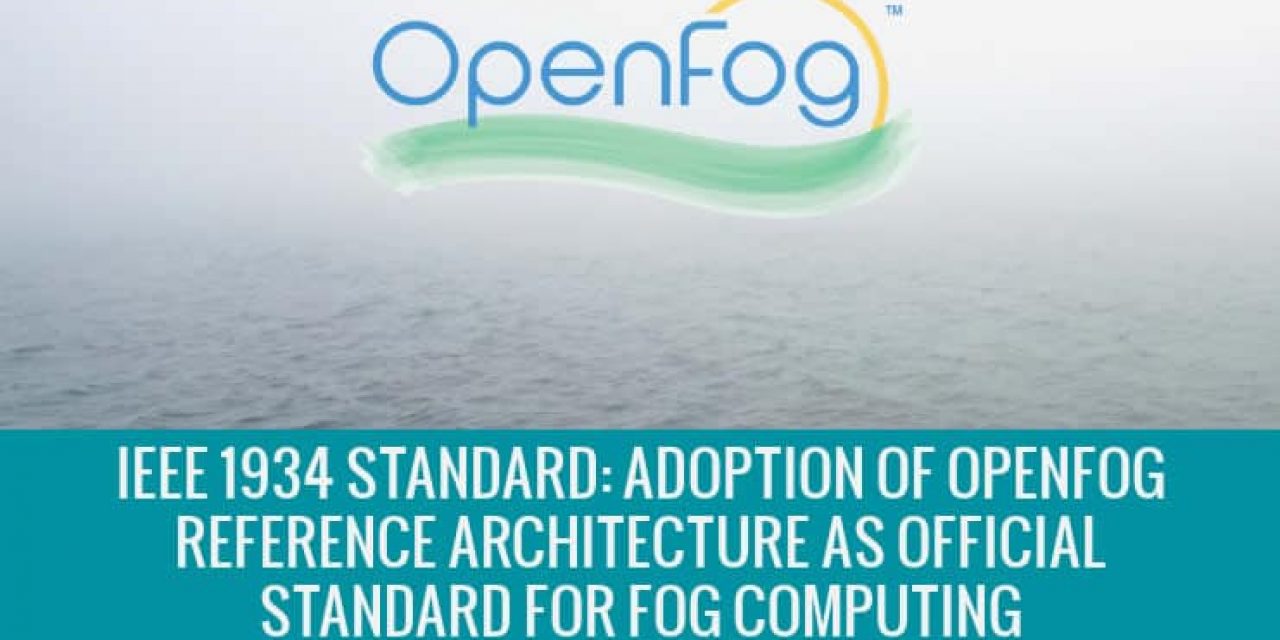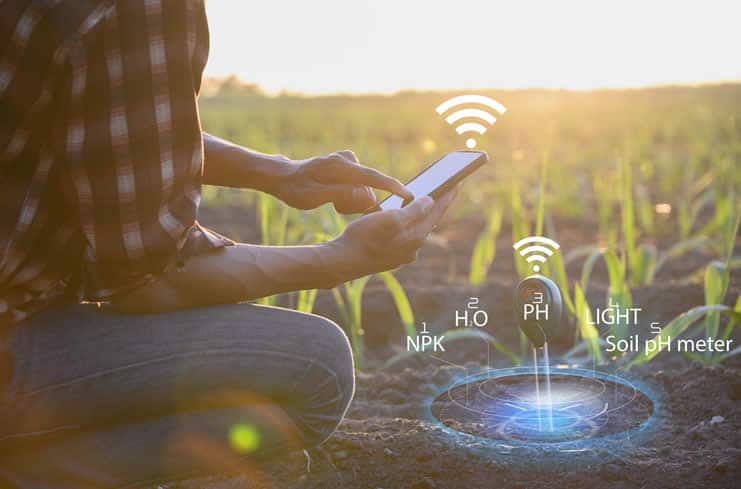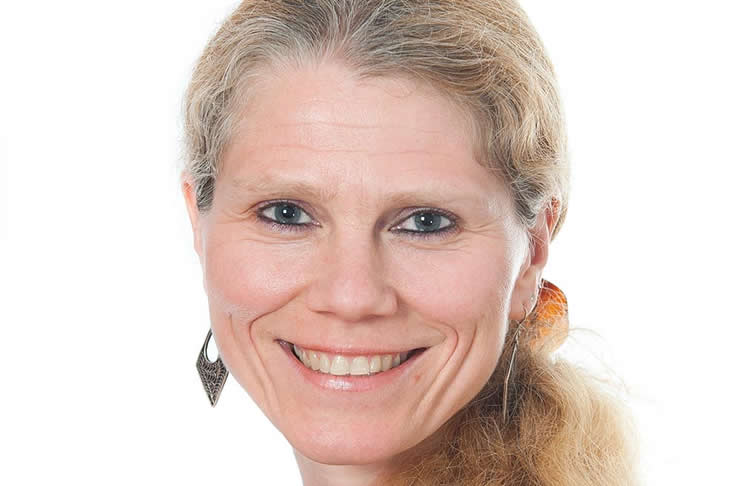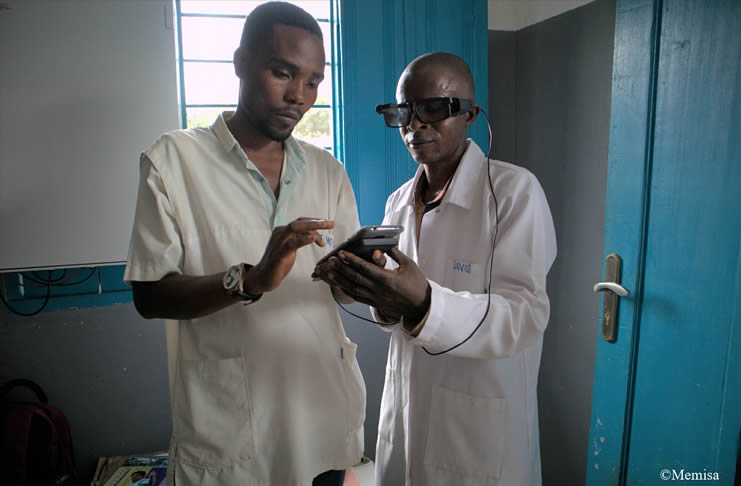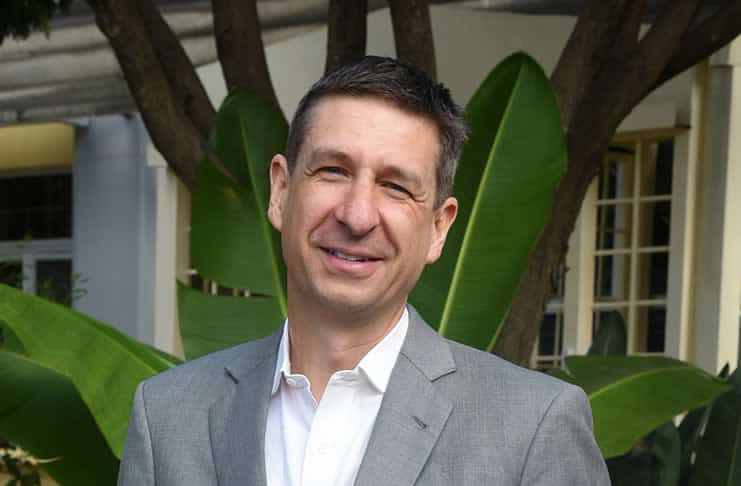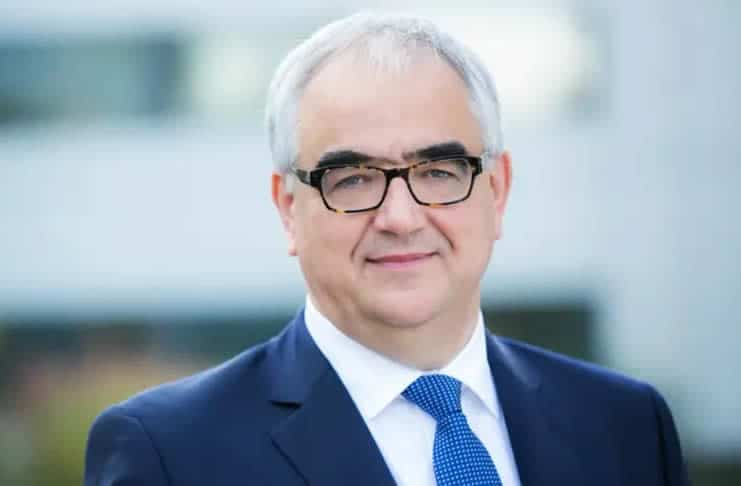What you need to know about OpenFog’s Reference Architecture and the IEEE 1934 standard, launched in June 2018 by the OpenFog Consortium and the IEEE Standards Association: what, why, when – and where you find more information.
Fog computing, which is designed as a cloud-like infrastructure that’s closer to the endpoints of networks as used in, among others, IoT and IIoT or Industry 4.0 deployments has its official standard.
The OpenFog Reference Architecture for fog computing, developed by the OpenFog Consortium (a.k.a. “OpenFog”) has been adopted as an official standard by the IEEE (Institute of Electrical and Electronics Engineers), resulting in standard IEEE 1934.
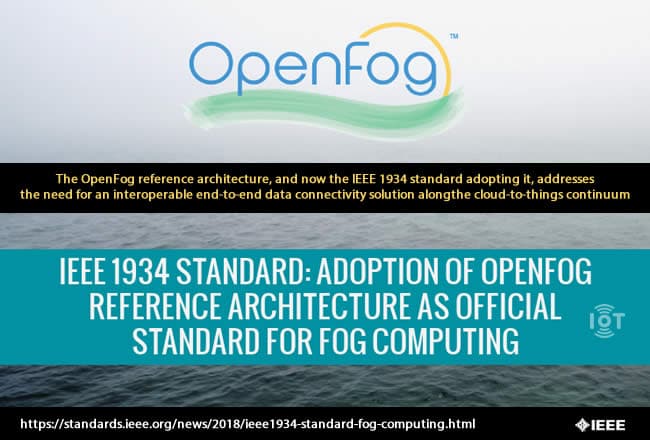
As a reminder: fog computing is an extension of and complement to cloud computing, forming a distributed network environment in-between the edge of a network and the cloud (or data center). It is often used interchangeably with edge computing but strictly speaking isn’t the same. Fog computing is sometimes seen as a way to implement edge computing.
The road towards standardization: from OpenFog Consortium to OpenFog Reference Architecture and IEEE 1934
Leaving aside those details: fog standardization efforts have started quite some time ago as previously reported. End June 2018 the OpenFog Consortium and the IEEE Standards Association announced that IEEE standard 1934 was finalized, based upon the mentioned OpenFog Reference Architecture.
This means that companies now have a standardized blueprint and framework to continue or start developing fog computing applications and solutions. At the same time the standard will accelerate innovation and market growth in IoT, 5G and AI, the OpenFog Consortium states.
The OpenFog Consortium started working on its open standard for fog computing since it was founded end 2015 with the aim to “accelerate the deployment of fog technologies through the development of an open architecture, core technologies including the capabilities of distributed computing, networking, and storage as well as the leadership needed to realize the full potential of IoT”.
In April 2016 the consortium announced an affiliation with the IEEE (which joined the board, along with GE Digital and Schneider Electric). In that same month OpenFog also started collaborating with the OPC Foundation in the scope of interoperability in industrial automation, Industrie 4.0, IoT in manufacturing and other areas where the OPC Foundation is active in (building management and automation, smart energy etc.).
IoT platform, IoT gateway and other IoT component/solution vendors started offering fog support and features, as did the three big public cloud vendors, Amazon, Google and Microsoft, who also have their platforms.
The OpenFog Reference Architecture (OpenFog RA), which is at the core of the IEEE 1934 standard, was presented in February 2017 as “a universal technical framework designed to enable the data-intensive requirements of the Internet of Things, 5G and artificial intelligence applications” .
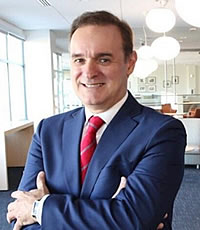
Cisco’s Helder Antunes, chairman of the consortium in that announcement: “Just as TCP/IP became the standard and universal framework that enabled the Internet to take off, members of OpenFog have created a standard and universal framework to enable interoperability for 5G, IoT and AI applications”.
You can download the OpenFog RA 162-page document here. It also contains an overview of use cases for fog computing, giving you an idea of where fog makes sense in practice. Areas of application include smart cities, smart energy, smart transportation, smart healthcare and smart manufacturing.
Or as Helder Antunes put it: “While fog computing is starting to be rolled out in smart cities, connected cars, drones and more, it needs a common, interoperable platform to turbocharge the tremendous opportunity in digital transformation. The new OpenFog Reference Architecture is an important giant step in that direction.”
IEEE 1934 – IEEE Standard for adoption of OpenFog Reference Architecture for fog computing
In our article on fog standardization we’ve mentioned how in October 2017 a new IEEE workgroup was formed to create fog computing and networking standards. A first draft, the “IEEE Draft Standard for Adoption of OpenFog Reference Architecture for Fog Computing” or P1934/D1.0, unapproved draft, was released in February 2018.
As mentioned in our article on fog computing there are eight core principles which drove and drive the OpenFog RA as depicted below (source: summary of the OpenFog Reference Architecture in PDF).
So, now there is the IEEE 1934 standard which is based upon the OpenFog RA and its eight principles: security, scalability, openness, autonomy, RAS (reliability, availability, and serviceability), agility, hierarchy and programmability.
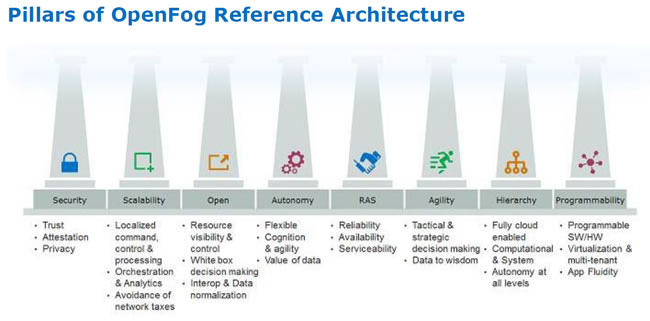
You can get the “IEEE 1934 – IEEE Standard for Adoption of OpenFog Reference Architecture for Fog Computing” (a.k.a. IEEE 1934-2018 or IEEE 1934) via the IEEE Standards Store.
John Zao, Associate Professor at the National Chiao Tung University and Chair of the IEEE Standards Working Group on Fog Computing and Networking Architecture Framework at the occasion of the new IEEE 1934 standard: “the release of IEEE 1934 has been achieved through the collaborative work of the IEEE Communication Society’s Edge, Fog, Cloud Communications with IOT and Big Data Standards Committee and The OpenFog Consortium’s Technical Committee. The resulting industry-supported standard provides a framework for driving innovation and market growth through the development of new applications and business models enabled by fog computing.”
Helder Antunes in the announcement of the IEEE standard by OpenFog: “As a consortium, we developed the OpenFog Reference Architecture with the intention that it would serve as the framework for a standards development organization. We’re pleased to have worked so closely with the IEEE in this effort as the result is a standardized computing and communication platform that will serve as a catalyst to the next digital revolution”.
The IEEE 1934 standard is one of many topics that take center stage at the second Fog World Congress, early October 2018 in San Francisco.
All images and logos are property and courtesy of their respective owners.
